Featured, Mocca Shots
Boost and Maintain Energy with These Nutrient Dense Foods
Our diets can have a dramatic impact on our energy levels. First and foremost, it is important to start with well balanced diet that is rich in whole, unprocessed foods and healthy balance of protein, carbs, and fats. Incorporating foods rich in nutrients, complex carbohydrates, and protein are important for sustained energy all day long.
If you feel sluggish or have trouble maintaining levels throughout the day, try adding more of these foods to your diet. And if you still need a boost- reach for a Mocca Shot.
Almonds
Not only are almonds are great balance of protein, fiber, healthy fats and carbs, they are also loaded with vitamins, minerals and antioxidants. They are a great snack anytime you’re feeling peckish and need a quick pick-me-up. (Snack suggestion- mix one oz almonds with a pack of Functional Fruit for a super snack full of energy boosting vitamins.)
Eggs
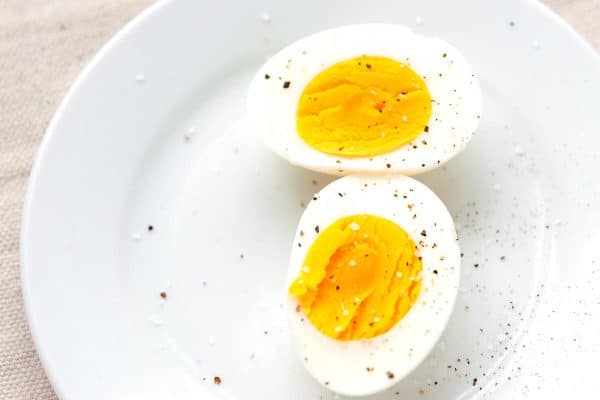
We all know eggs are a great source of protein providing long lasting energy throughout the day. They are also rich in an amino acid called leucine which is known to stimulate energy production. In addition, eggs are rich in B-vitamins which aid in breaking down food for energy. The great thing about eggs is they are so versatile- they can be incorporated in any meal of the day, and hard boiled eggs make a great snack.
Oatmeal
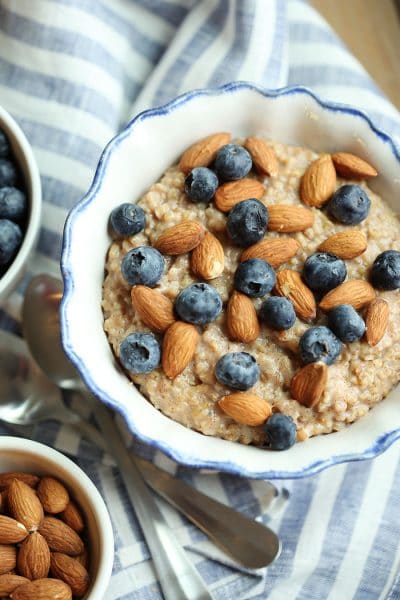
You’ve probably heard that oatmeal is great for long lasting energy, but why? You know that gel-like consistency of oatmeal when you add hot water? This is a soluble fiber known as beta-glucan, and it helps delay the absorption of glucose into the blood when digested. So in effect, oatmeal is a natural form of controlled-release energy. In addition, it’s full of vitamins and minerals including B-vitamins, iron and manganese all of which help elevate energy levels.
Dark Chocolate
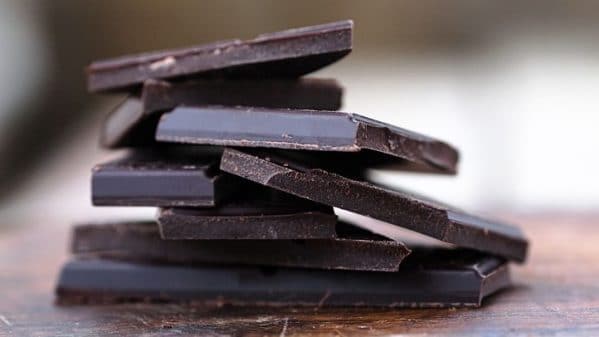
Dark chocolate has a number of health benefits, which can be attributed to the flavonoids found in cacao. The effects of these powerful antioxidants have been shown to improve cognitive function and mood. The compounds in dark chocolate increase blood flow throughout the body, reduce mental fatigue, improve mood, and are a stimulant for the brain. All of which help give you the energy to focus and perform better throughout the day.
Leafy Greens
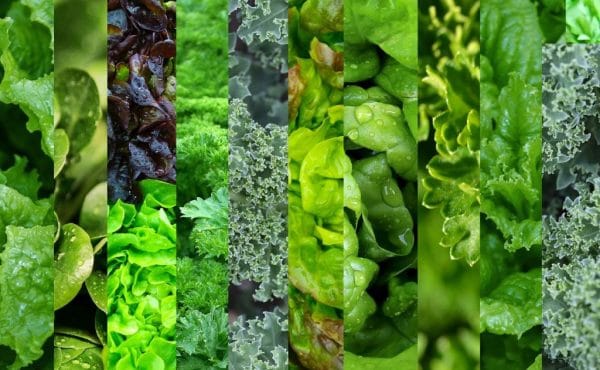
While eating spinach won’t give you bulging forearms, there may be something to the boost of energy that Popeye gets when he eats a can of spinach. Leafy greens are full of nutrients that promote energy. They are chock full of iron, calcium, magnesium, potassium and vitamins A, C, E, and K, in addition to folic acid and antioxidants.
Quinoa
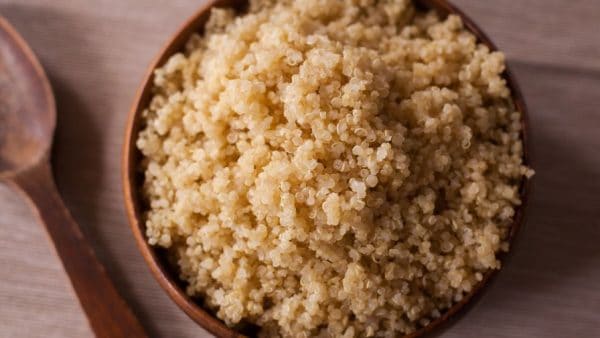
Quinoa has become an increasingly popular grain over the past decade, and for good reason. Because it has a low glycemic index, it is slowly absorbed over time and can provide sustained energy. One cup of quinoa contains 39 grams of carbs, 5 grams of fiber, and 8 grams of protein in addition to a variety of beneficial vitamins and minerals.
Fish
Fish like tuna and salmon are a great source of protein, omega-3 fatty acids and B vitamins. One serving of fish contains your daily recommended value of omega-3 fatty acids and B12, both of which have been shown to reduce fatigue.
Hummus
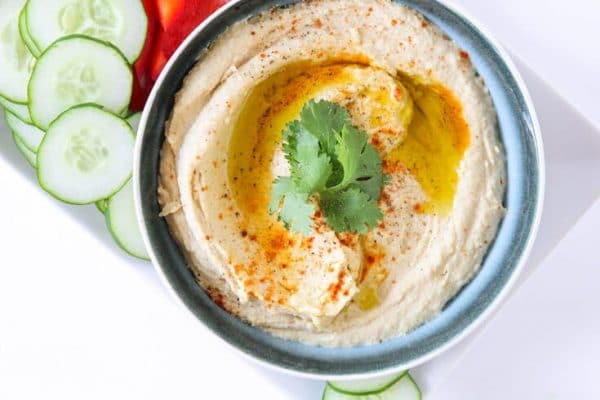
Hummus is made from chickpeas which are a great source of complex carbohydrates and fiber for sustained energy. Other ingredients include sesame seed butter and olive oil which are both healthy fats and help to slow the absorption of carbohydrates to avoid blood sugar spikes.
Avocados
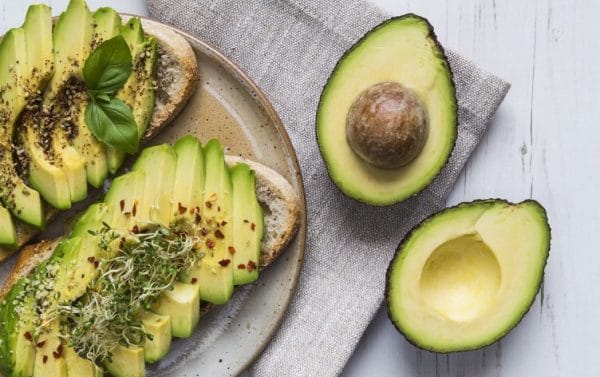
Avocados are ridiculously nutritious and contain 20 different vitamins and minerals- the most abundant are Folate, Potassium, and vitamins K, C, B5, B6 and E. Moreover, they are rich in healthy fats and fiber. Nearly 84% of the fats in avocados are from monounsaturated and polyunsaturated fatty acids. These healthy fats combined with the fiber in avocados are shown to help maintain steady energy levels.
Thanks for reading.
References
Amino Acids. 2016 Jan;48(1):41-51. doi: 10.1007/s00726-015-2067-1. Epub 2015 Aug 9.
Avocados, raw, all commercial varieties Nutrition Facts & Calories. (n.d.). Retrieved May 15, 2018, from https://nutritiondata.self.com/facts/fruits-and-fruit-juices/1843/2
Cereals, oats, instant, fortified, plain, dry [instant oatmeal] Nutrition Facts & Calories. (n.d.). Retrieved May 15, 2018, from https://nutritiondata.self.com/facts/breakfast-cereals/1599/2
Chem Biol Interact. 2006 Oct 27;163(1-2):94-112. Epub 2006 May 1.
Crit Rev Food Sci Nutr.2013;53(7):738-50. doi: 10.1080/10408398.2011.556759.
Dan Med J. 2014 Apr;61(4):B4824.
Eur J Nutr. 2008 Sep;47(6):294-300. doi: 10.1007/s00394-008-0724-9. Epub 2008 Jul 16.
Fish, salmon, Atlantic, wild, raw Nutrition Facts & Calories. (n.d.). Retrieved May 15, 2018, from https://nutritiondata.self.com/facts/finfish-and-shellfish-products/4102/2
J Psychopharmacol. 2010 Oct;24(10):1505-14. doi: 10.1177/0269881109106923. Epub 2009 Nov 26.
Nutrients. 2014 Oct 3;6(10):4058-73. doi: 10.3390/nu6104058.
Nutrients. 2016 Nov 29;8(12). pii: E766.
Nuts, almonds [Includes USDA commodity food A256, A264] Nutrition Facts & Calories. (n.d.). Retrieved May 15, 2018, from https://nutritiondata.self.com/facts/nut-and-seed-products/3085/2
Sissons, M. (2016). Pasta. Encyclopedia of Food Grains, 79-89. doi:10.1016/b978-0-12-394437-5.00123-6
The Journal of Nutrition, Volume 136, Issue 12, 1 December 2006, Pages 2987–2992, https://doi.org/10.1093/jn/136.12.2987
Turk Kardiyol Dern Ars. 2015 Mar;43(2):199-207. doi: 10.5543/tkda.2015.70360

